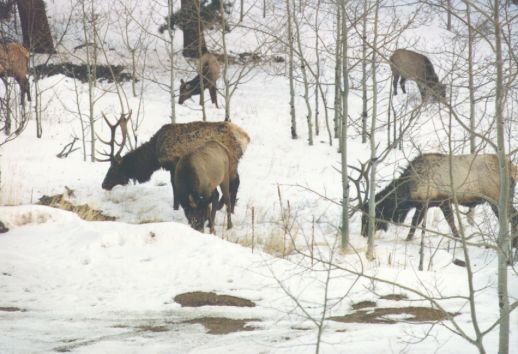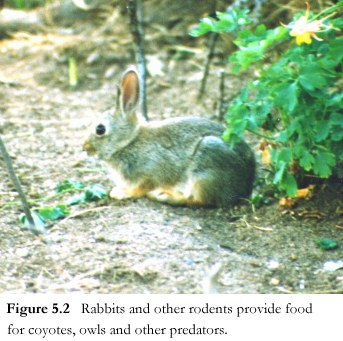


The Magnolia Planning Area is located in the montane life zone between 6,000 and 8,900 feet and is characterized by more or less continuous coniferous forest, interspersed with patches of aspen, grassland (principally pastures), rock outcrops, small wetlands, some riparian communities, and one large body of water, Gross Reservoir. These habitats are home to a wide variety of wildlife, both resident and migratory. Early settlers in Colorado noted a variety of wildlife in the area, but in exploiting this fauna extirpated many of the large mammalian and predator species. Widespread logging and fires accompanied the initial wave of settlers and miners, then suppression of wildfires during most of the 20th century has resulted in a loss of structural diversity and age class in Front Range forests, including old growth forests (Peet 1981, Veblen and Lorenz 1986, 1991). This habitat alteration has hindered recovery of many wildlife species and shifted faunal communities from their historic composition. In recent decades, increasing human population, road construction, and recreational use have adversely impacted many wildlife species. Regional and global environmental degradation may also be adversely impacting the fauna of the Magnolia area, particularly birds and amphibians.
 |
| Figure 5.1 The Magnolia area provides key habitat for Rocky Mountain Elk. |
The Colorado Division of Wildlife (CDOW), Department of Natural Resources, has jurisdiction over wildlife management on private land, including the regulation of hunting and fishing activities by issuing licenses and enforcing regulations. The CDOW also provides technical assistance to landowners concerning wildlife and habitat management, and develops programs to protect and recover threatened and endangered species.
The eight-member Wildlife Commission, appointed by the governor, sets CDOW regulations and policies for hunting, fishing, watchable wildlife, and threatened and endangered species. The CDOW receives no state tax revenue. All hunting and fishing license fees are deposited in a game cash fund, but the state legislature has final authority over CDOW spending.
Permit actions that require federal funds or permits also potentially involve the US Fish and Wildlife Service and the Environmental Protection Agency.
The Colorado Department of Agriculture, Rodent/Predator Control Section, has jurisdiction over certain wildlife species that adversely impact agricultural operations. Due to the small scale of local agricultural operations, this agency is not expected to have a significant role in wildlife issues in the Planning Area.
 Resource
managers focus most of their effort on specific species of concern and emphasize
management of wildlife habitats, not of individual animals or populations, unless
the species is on the verge of extinction. Habitat management is typically keyed
on specific terrestrial or aquatic habitats that are limiting factors in the
population of a species or faunal community of concern. Essentially, the availability
of effective habitat (as defined in 5.4.1) governs the well-being of the species
dependent upon that habitat.
Resource
managers focus most of their effort on specific species of concern and emphasize
management of wildlife habitats, not of individual animals or populations, unless
the species is on the verge of extinction. Habitat management is typically keyed
on specific terrestrial or aquatic habitats that are limiting factors in the
population of a species or faunal community of concern. Essentially, the availability
of effective habitat (as defined in 5.4.1) governs the well-being of the species
dependent upon that habitat.
This tenet of wildlife management in turn places most of the responsibility for maintaining healthy wildlife populations onto the public land managers and private property owners who have lands essential for wildlife, because these parties have direct control on the quality of the habitat that is available to wildlife. In the Planning Area, this involves the Boulder County Parks and Open Space Department, Forest Service and Denver Water with respect to public lands. In the case of private lands, there are few parcels of sufficient size to warrant individual wildlife habitat management plans. However, certain key private parcels that provide habitat bridges to noncontiguous public lands could be critical to the implementation of wildlife management plans.
 |
 |